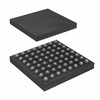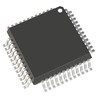Manufacturer Part Number
AD9289BBC
Manufacturer
Analog Devices
Introduction
The AD9289BBC is a high-speed, 8-bit, quad Analog to Digital Converter (ADC) designed for data acquisition systems requiring high data rates and bandwidth.
Product Features and Performance
8-bit resolution for precise analog to digital conversion
High sampling rate of up to 65M samples per second for fast data acquisition
Quad input channels with differential input type for improved signal integrity
LVDS serial data interface for high-speed data transfer
Simultaneous Sampling capability for synchronized data acquisition across channels
Pipelined architecture for efficient data processing
Supports both external and internal reference voltage for flexible system integration
Product Advantages
Enables high-speed data acquisition for demanding applications
Quad-channel input allows for simultaneous data capture from multiple sources
Differential inputs reduce signal noise and interference
Compact 64-CSPBGA package suitable for space-constrained applications
Key Technical Parameters
Number of Bits: 8
Sampling Rate (Per Second): 65M
Number of Inputs: 4
Input Type: Differential
Data Interface: LVDS Serial
Voltage Supply, Analog: 2.7V ~ 3.3V
Voltage Supply, Digital: 2.7V ~ 3.3V
Operating Temperature: -40°C ~ 85°C
Quality and Safety Features
Operates within a wide temperature range for use in harsh environments
Compatibility
LVDS serial interface ensures compatibility with modern digital systems
Application Areas
Communication systems
Radar and satellite systems
Signal intelligence
Medical imaging equipment
Product Lifecycle
The AD9289BBC is categorized as Obsolete, indicating potential discontinuation with limited availability of replacements or upgrades
Several Key Reasons to Choose This Product
High-speed performance ideal for advanced data acquisition systems
Quad-channel differential inputs maximize data integrity and system versatility
Low voltage operation helps to minimize power consumption
Wide operating temperature range ensures reliability in extreme conditions
Obsolescence status necessitates evaluation for legacy system maintenance or upgrade considerations



 AD9300KP PLCC20ADI (Analog Devices, Inc.)
AD9300KP PLCC20ADI (Analog Devices, Inc.) AD9286BCPZ-500Analog Devices Inc.IC ADC 8BIT PIPELINED 48LFCSP
AD9286BCPZ-500Analog Devices Inc.IC ADC 8BIT PIPELINED 48LFCSP AD9288BST-40Analog Technologies
AD9288BST-40Analog Technologies